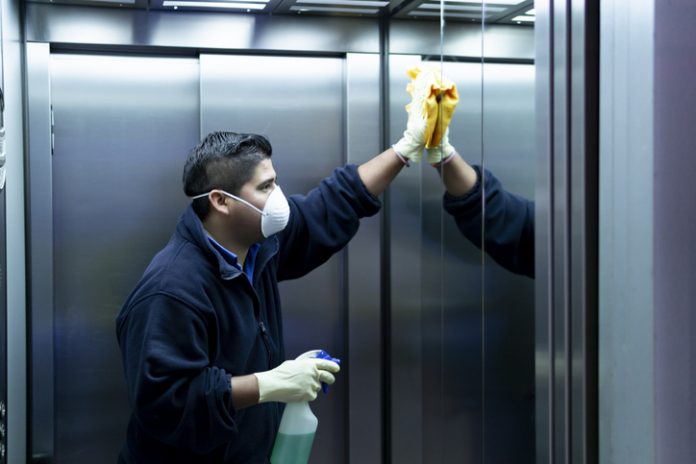
The United States has not implemented a standardized federal policy for dealing with COVID-19, leaving every state to fend for itself when it comes to testing and determining what guidelines and processes to follow to battle the pandemic. The CDC has issued recommendations to help thwart the pandemic, but even those have come under fire, with the White House often altering recommendations written by CDC scientists. This chaotic situation has left individual Americans and many organizations to their own devices to determine how they’ll deal with SARS-CoV-2, the virus that causes COVID-19.
The world just got a crash course on infection prevention and, in many industries, cleaning has become an almost theatrical performance. When it comes to hospitality, although implementation of a standard program for minimizing risk of infection has not occurred, the CDC has issued recommendations for cleaning facilities and hotels. Organizations such as the American Hotel and Lodging Association (AHLA) have launched initiatives such as Safe Stay in an attempt to establish industry-wide initiatives for hotel cleaning and disinfection, social interactions, and workplace protocols. While the top hospitality corporations have endorsed Safe Stay, at the individual hotel level, implementation is lacking. This is why employee training and processes at the same hotel brand in Atlanta, Chicago, and Pittsburgh might vary greatly.
Moreover, in an effort to encourage guests to return to their properties, some hotels have started promoting their use of new technologies such as ultraviolet-C (UVC) devices, air purifiers, and ozone generators for disinfection. Unfortunately, the EPA does not routinely review such devices for safety or efficacy. This means that while they might be effective, they are not registered by the EPA to kill SARS-CoV-2. Additionally, the safety of such devices has come under fire, with the FDA going so far as to issue warnings against UVC devices, which can cause severe burns and eye injuries. To help cut through the confusion around such devices, industry organizations recently teamed to develop a position paper detailing which UVC products in different consumer, commercial, and healthcare applications are eligible for safety certifications.
Given this uncertainty and constant change, how can hospitality organizations ensure the safest possible guest environment?
A Back-to-Basics Approach
Hotels can optimize cleaning and infection prevention across their brands by getting back to basics, starting with training guestroom attendants (GRAs). No device can replace well-trained GRAs who understand the importance of what they do and know that cleaning and disinfection are two different processes. By providing additional training for housekeeping staff, hotels can ensure the highest level of guestroom hygiene, prevent cross-contamination, and instill confidence in their guests.
Here’s how a well-trained housekeeping staff would work:
Prior to their shifts, GRAs would complete temperature checks and review a health checklist. During their shifts and throughout the hotel, they would wear face masks and disposable gloves. Gloves would be replaced after cleaning each room. In the guestroom, GRAs would leverage colored-coded products for each area. They’d use orange wipers and flat mops in the bathroom (COVID-19 has been shown to be viable in toilet plume and survives the human digestive tract), ensuring the bathroom and toilet are isolated from all other guestroom areas. Yellow wipers combined with an all-purpose cleaner would be used for all frequently touched surfaces in the guestroom. This color-coded, one-per-room methodology virtually eliminates the risk of cross-contamination.
Once the cleaning process is complete, GRAs would disinfect all surfaces in the hotel room using EPA List N surface disinfectants. This is a crucial step, as specified by the EPA and FDA. Cleaning—thoroughly removing all soil and organic matter—first must be done manually by housekeeping. Only then is disinfection effective. If the organization chooses to use UVC or other devices during the disinfection process, they should heed warnings issued by the FDA and other industry organizations to ensure effective disinfection as well as employee and guest safety.
Additional best practices include:
- Removing non-essential amenities such as guest directory, pen, and mini-bar items.
- Providing self-sanitizing stations at entrances, high-traffic public areas, elevators, and guestrooms.
- Evaluating chemicals used to ensure that GRAs’ health is not at risk.
- Laundering fabric shower curtains more often, as they are a likely source of curtain-to-hand contamination.
- Assigning members of housekeeping staff to frequently disinfect all people touchpoints in all public area, including:
- Door push bars, rails, and handles
- Elevator call buttons and interior railings
- Check-in and concierge countertops
- Handrails throughout public areas
- Escalator handrails
- Fitness centers and concierge lounge area
- Lobby bar and lounge areas
Finally, hotels can post guidance for effective handwashing and mask-wearing throughout appropriate employee and guest common areas and bathrooms.
Rising to the Occasion
When it comes to cleaning and disinfection, the human can’t be removed from the process. Hospitality organizations are in a position to show what a new normal might look like by investing in training the people who are so critical to cleanliness, infection prevention, and, ultimately, guest satisfaction. For more information on detailed best practices—including process, products, and chemicals—that can be customized by any hotel, visit the AHLA’s ABCs of Housekeeping guide.











